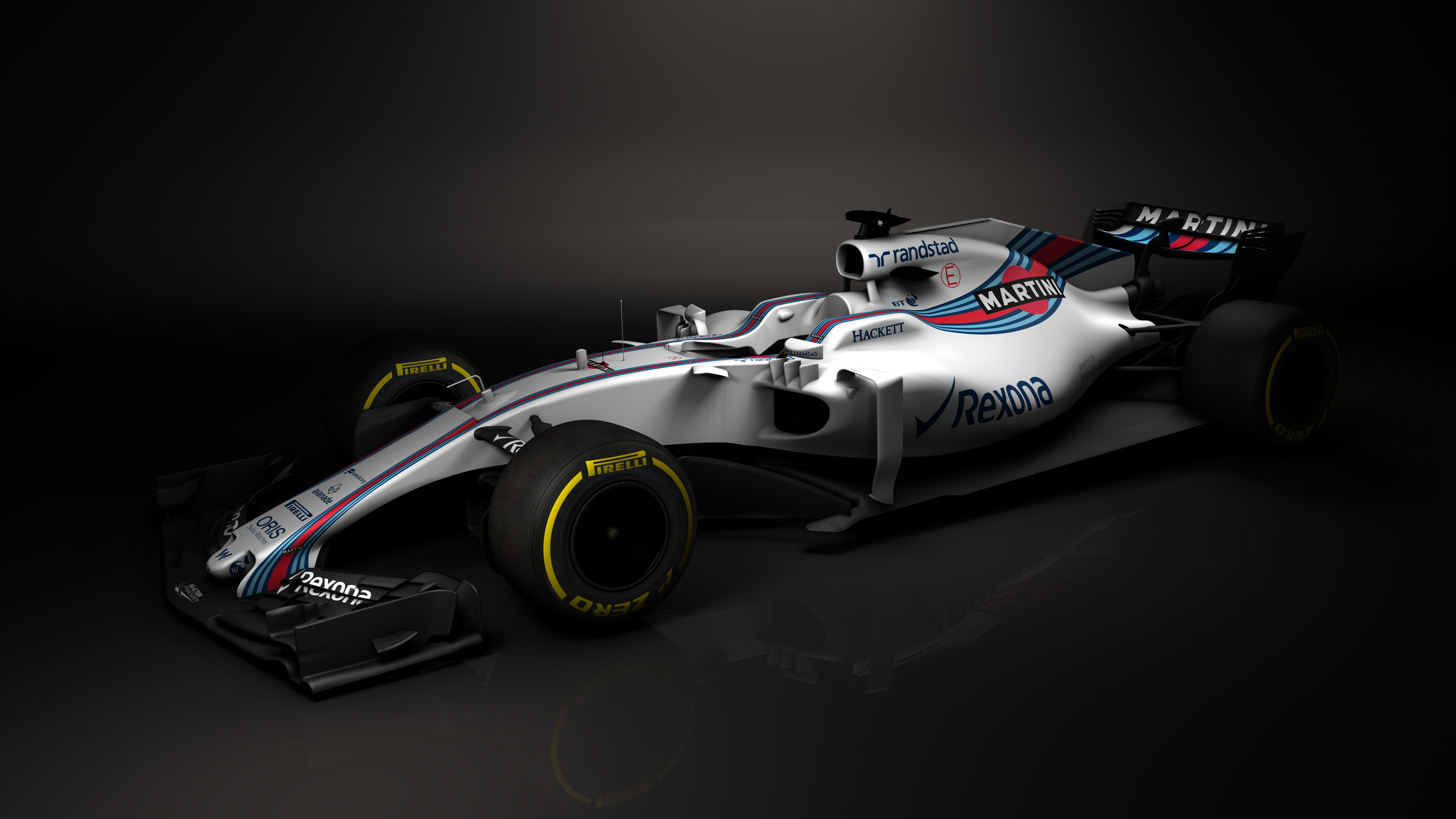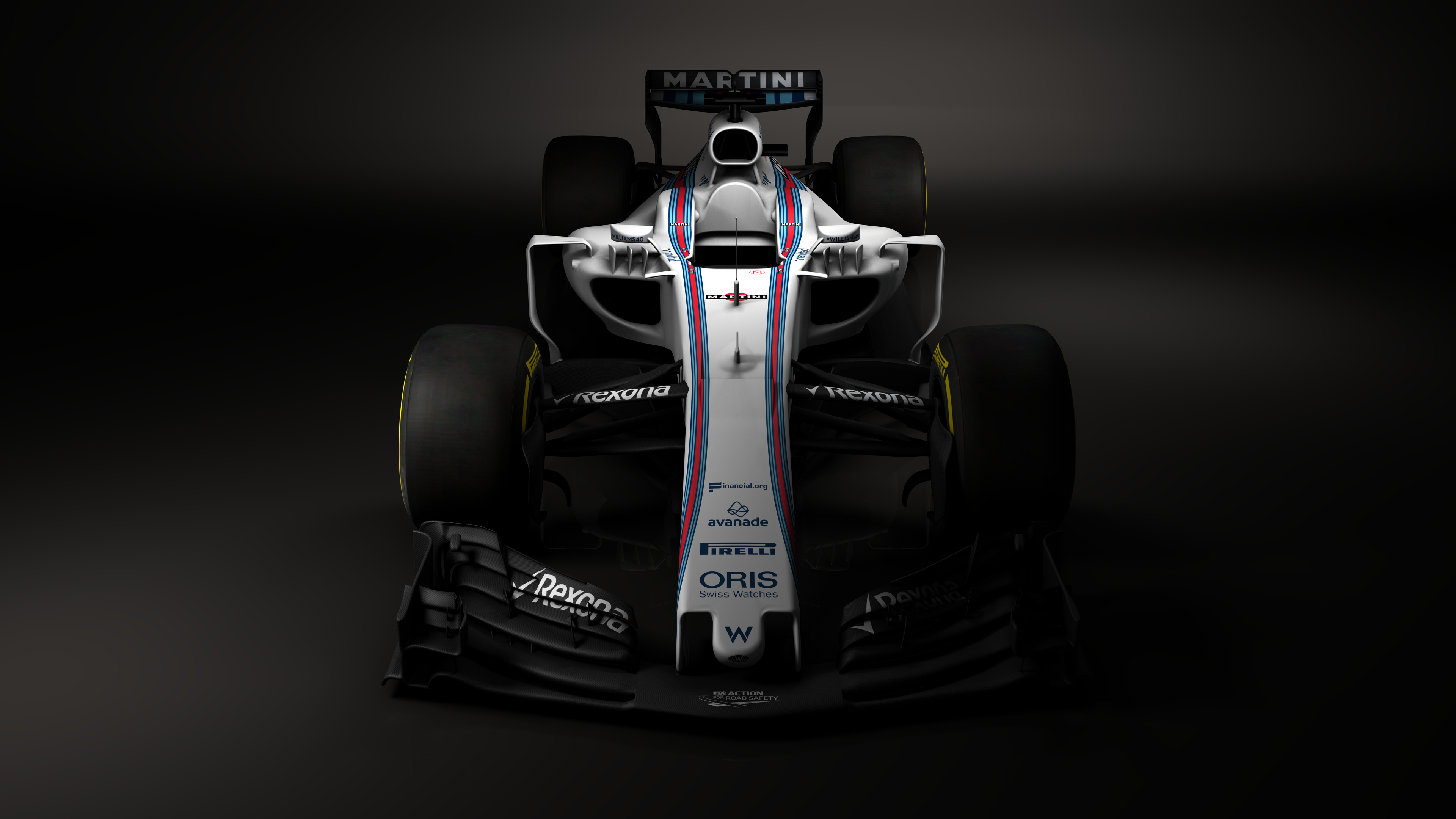

I don't think it's a fin. The floor is continuous, but sloping up toward the center of the car to accommodate the big leading edge radius.












I agree now that it was my mistake, I had a picture in my head how the new floor would be designed and the illusion backed up my thoughts. Looking at saubers floor my thoughts might not be far off, guess we'll find out next week.SR71 wrote:After looking at this image I'm believe the optical illusion is the difference in specular nature between the floor and the blended surface between floor and sidepod.
Williams has rendered the car with a ultra matte floor, perhaps not even black. The blended surface between the blue lines is black rendered with a satin finish and the highlights are evidence.
I've drawn a rough section line (red) that I believe shows the actual surface, or close.
https://s10.postimg.org/6cq67hlkp/specular.jpg

I fully expect a more detailed car at launch. Much like the differences between the Renault renders and actual car.edu2703 wrote:Well, it's a 3D render, so I will not waste time analyzing it. There are several missing details and the model seems to be out of proportion.
Basically, it's just marketing. I'll wait until Williams officially launches the car on Saturday. There are rumors that the official car will be a little different from the model, including a new livery. But this is subject for another topic.
I have seen February 25th as "launch date" on different sites. But no specifics.tomazy wrote:Is it official that they will launch the car on Saturday? I read that they have a filming day then, but nothin about the launch?
That 's my understanding too ! The impact of drag is much higher this year than in 2014 .F1Krof wrote:From what I gathered, Williams again following the route of 2014, efficient low drag configuration fast on the straights. I wonder if they think that overtaking's going to be hard, therefore having a faster car on the straights will give them an advantage?
Exactly, they fared very well in 2014, then they started to dip as the others refined their Aerodynamic's efficiency. I believe (of topic), Red Bull ran some clever rake controlling suspension trickery, they were very fast on the straight, normally in 14' 15' they were no match for Williams. They found out that the others are catching up and change their philosophy for 2016 which they truly dipped. Let's see this time around, from all the cars up until now, even though it is just a render, it's seem very slick, front to end looks to have been designed for minimum drag. Unless the rendered picture is a Spa or Monza configuration spec.LookBackTime wrote:That 's my understanding too ! The impact of drag is much higher this year than in 2014 .F1Krof wrote:From what I gathered, Williams again following the route of 2014, efficient low drag configuration fast on the straights. I wonder if they think that overtaking's going to be hard, therefore having a faster car on the straights will give them an advantage?
Or at least will use the actual low drag philosophy and try to develop the car on a different route this year and next year (if you compare with what happened in the last two years with aero dev. - see Claire Williams comments made few weeks ago).

dren wrote:The low drag philosophy worked well for Williams when they had the large Mercedes PU advantage over the field. It has dwindled the last two years. Even with a top speed advantage, higher DF cars are going to keep their distance in the turn leading up to the straight that I wonder if the low drag will have much of an advantage. The higher DF cars will be able to brake later and carry more speed into corners as well.